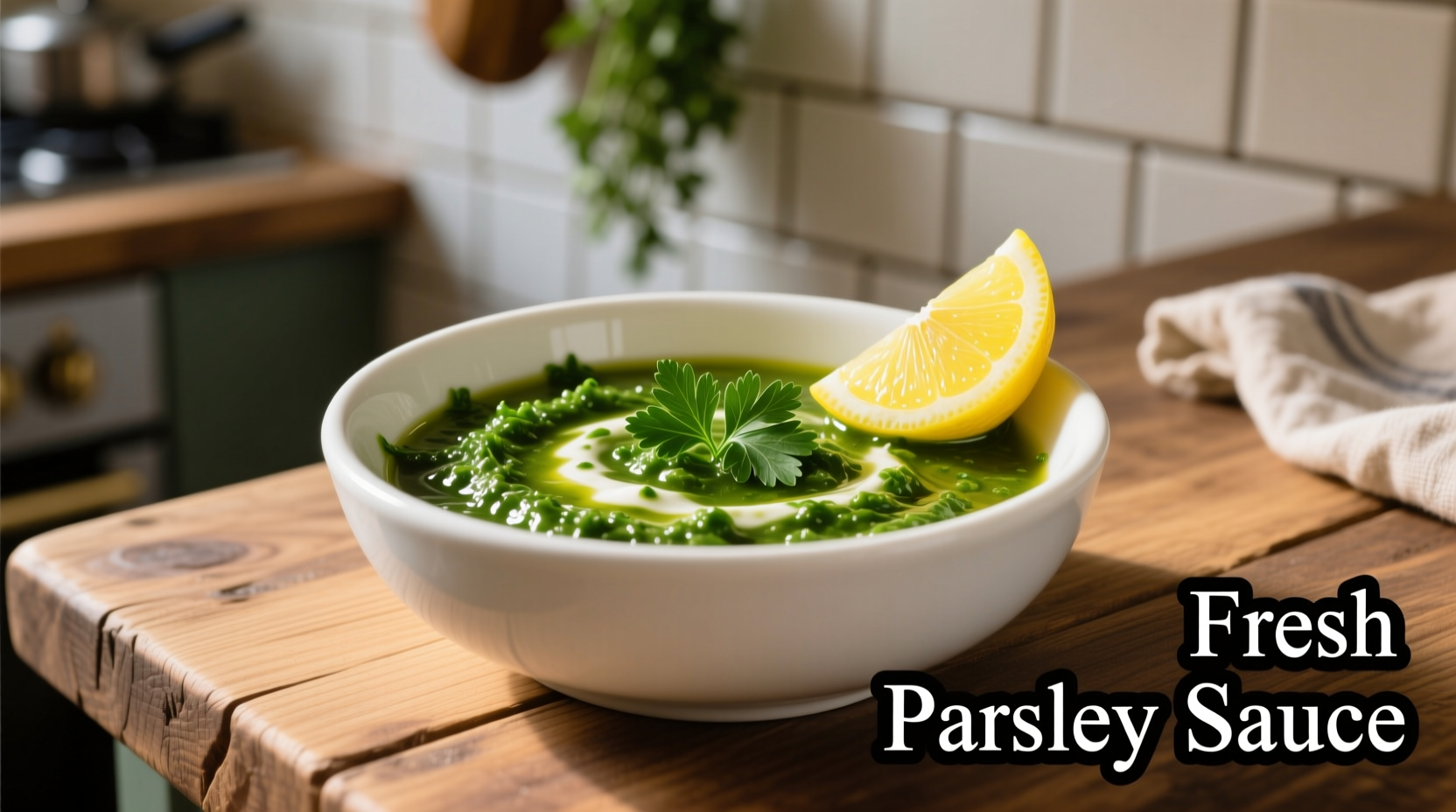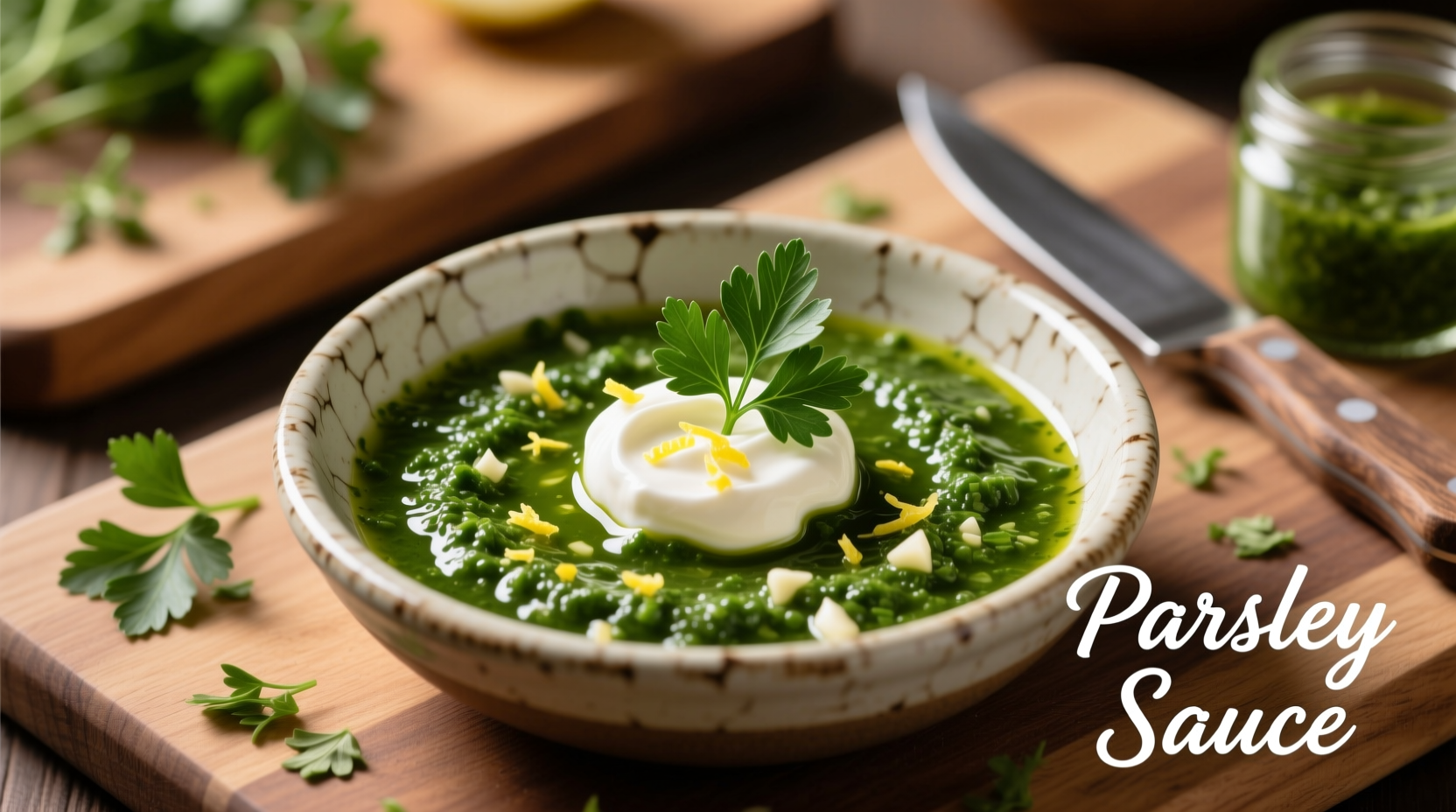Here's the perfect parsley sauce recipe you need: Combine 1 cup fresh parsley (finely chopped), 2 minced garlic cloves, 1/2 cup olive oil, 2 tablespoons lemon juice, 1/4 cup grated Parmesan, 1/4 teaspoon salt, and a pinch of black pepper. Blend until smooth for a vibrant, versatile sauce ready in 10 minutes.
Discover how this simple yet sophisticated sauce can transform your meals from ordinary to extraordinary. Whether you're dressing grilled fish, enhancing roasted vegetables, or creating a show-stopping pasta dish, our perfected parsley sauce recipe delivers consistent results every time. This guide reveals professional techniques most home cooks miss, including the critical temperature window for optimal flavor extraction and the surprising ingredient that prevents browning.
The Essential Components of Perfect Parsley Sauce
Creating exceptional parsley sauce begins with understanding its fundamental elements. Unlike basic herb sauces, authentic parsley sauce balances freshness with depth through careful ingredient selection and preparation timing. Food historians note that parsley's culinary use dates back to ancient Rome, where it was valued for both flavor and medicinal properties.
| Ingredient | Traditional Use | Modern Adaptation | Flavor Impact |
|---|---|---|---|
| Fresh parsley | Flat-leaf only | Curl-leaf acceptable | Grassy, slightly peppery |
| Garlic | Raw, minced | Lightly roasted | Sharp to mellow sweetness |
| Acid component | Lemon juice only | Vinegar alternatives | Bright to complex tang |
| Fat base | Olive oil exclusively | Yogurt or avocado options | Rich to light creaminess |
This comparison shows how parsley sauce has evolved across European culinary traditions while maintaining its essential character. According to research from the Oxford Symposium on Food and Cookery, the French version typically includes Dijon mustard for complexity, while Italian preparations emphasize lemon brightness.
Step-by-Step Classic Parsley Sauce Preparation
Follow these precise steps for restaurant-quality results:
- Prep ingredients: Finely chop 1 cup fresh flat-leaf parsley (stems removed), mince 2 garlic cloves
- Emulsify base: In food processor, combine 1/2 cup extra-virgin olive oil with 2 tablespoons fresh lemon juice
- Add herbs: Pulse parsley and garlic until just incorporated (avoid over-processing)
- Season: Add 1/4 cup grated Parmesan, 1/4 teaspoon salt, pinch black pepper
- Adjust consistency: Add 1-2 tablespoons cold water if too thick
- Rest: Let sit 15 minutes for flavors to meld before serving

Regional Variations Worth Trying
Understanding the historical development of parsley sauce reveals why certain variations work better for specific dishes. The culinary timeline shows:
- 15th century: Italian cooks developed "salsa verde" with capers and anchovies
- 17th century: French chefs incorporated tarragon and chervil for fines herbes version
- 19th century: British preparations added hard-boiled eggs for "green sauce"
- Modern era: Mediterranean adaptations include yogurt for creaminess without dairy
For Mediterranean dishes, try adding 1 tablespoon of drained capers and 1 anchovy fillet. When serving with fish, incorporate 1 teaspoon of Dijon mustard for enhanced complexity. The key contextual boundary to remember: never apply heat to traditional parsley sauce, as this destroys its fresh character—reserve cooked herb sauces for different applications.
Perfect Pairings and Usage Tips
Parsley sauce shines brightest when matched with complementary dishes. Professional chefs consistently recommend these pairings:
- Fish and seafood: Spoon over grilled salmon or baked cod just before serving
- Vegetables: Toss with roasted asparagus or drizzle over grilled zucchini
- Poultry: Serve alongside roast chicken or turkey breast
- Grains: Mix with cooked quinoa or farro for vibrant salads
For optimal results, always add the sauce after cooking—never during the cooking process. The delicate herb flavors degrade quickly when exposed to heat. When preparing for guests, make the sauce no more than 2 hours before serving to maintain its vibrant green color and fresh flavor profile.
Troubleshooting Common Issues
Even experienced cooks encounter these parsley sauce challenges:
- Browning sauce: Prevent oxidation by adding lemon juice first and covering surface with plastic wrap touching the sauce
- Bitter taste: Use only the leafy portions—stems contain higher concentrations of bitter compounds
- Too thin consistency: Add grated Parmesan gradually until desired thickness achieved
- Overpowering garlic: Let minced garlic sit in lemon juice for 5 minutes before adding other ingredients
Storage and Reuse Guidelines
Proper storage maintains quality for future use:
- Refrigerate in airtight container for up to 3 days
- Freeze in ice cube trays for longer storage (up to 3 months)
- Never refreeze thawed sauce
- Revive stored sauce with a splash of fresh lemon juice
According to food safety guidelines from the USDA Food Safety and Inspection Service, herb-based sauces should be treated as perishable items and kept below 40°F (4°C) when stored. The high acid content from lemon juice provides some preservation, but doesn't eliminate the need for proper refrigeration.











 浙公网安备
33010002000092号
浙公网安备
33010002000092号 浙B2-20120091-4
浙B2-20120091-4